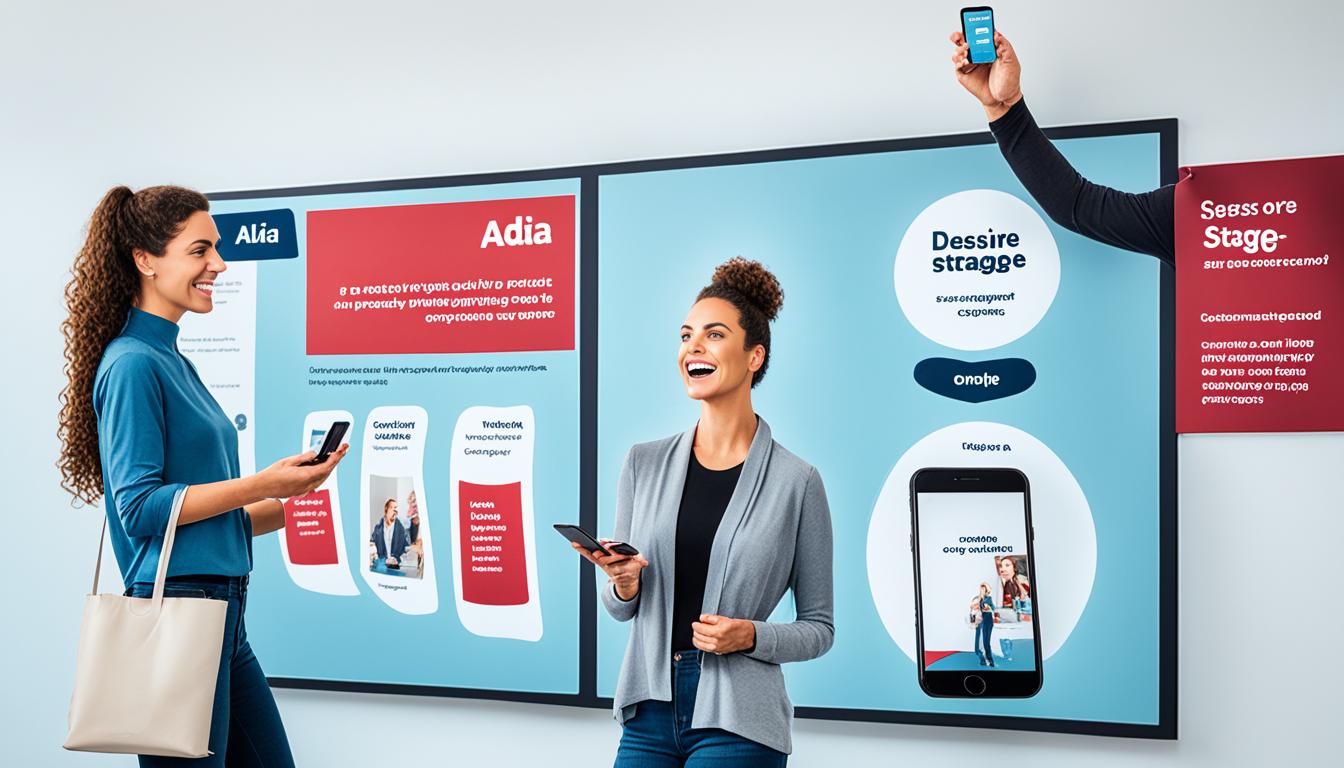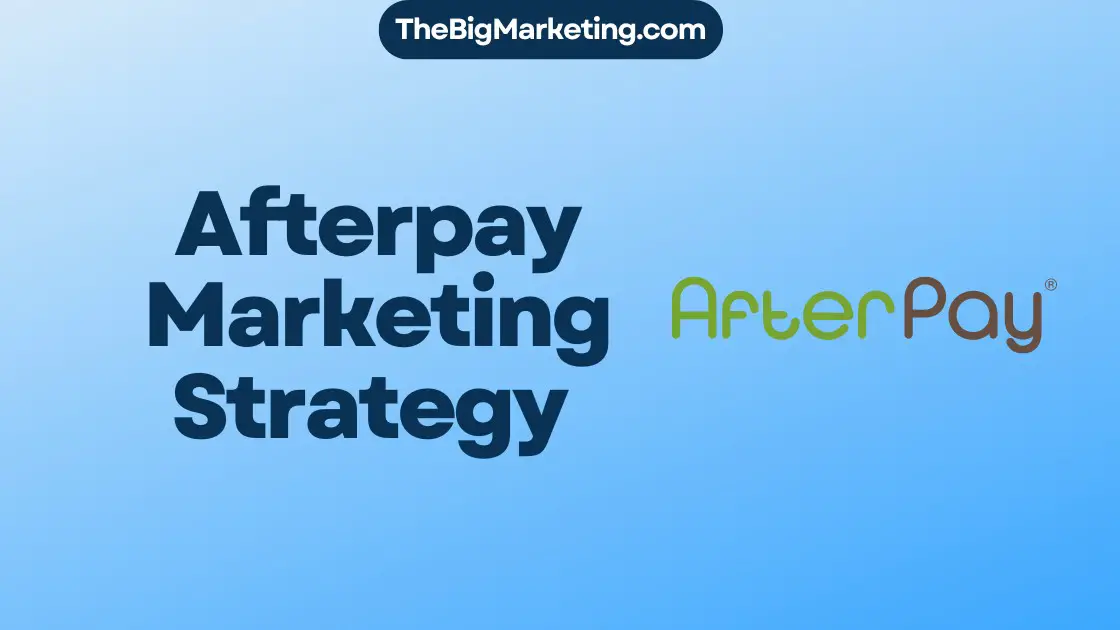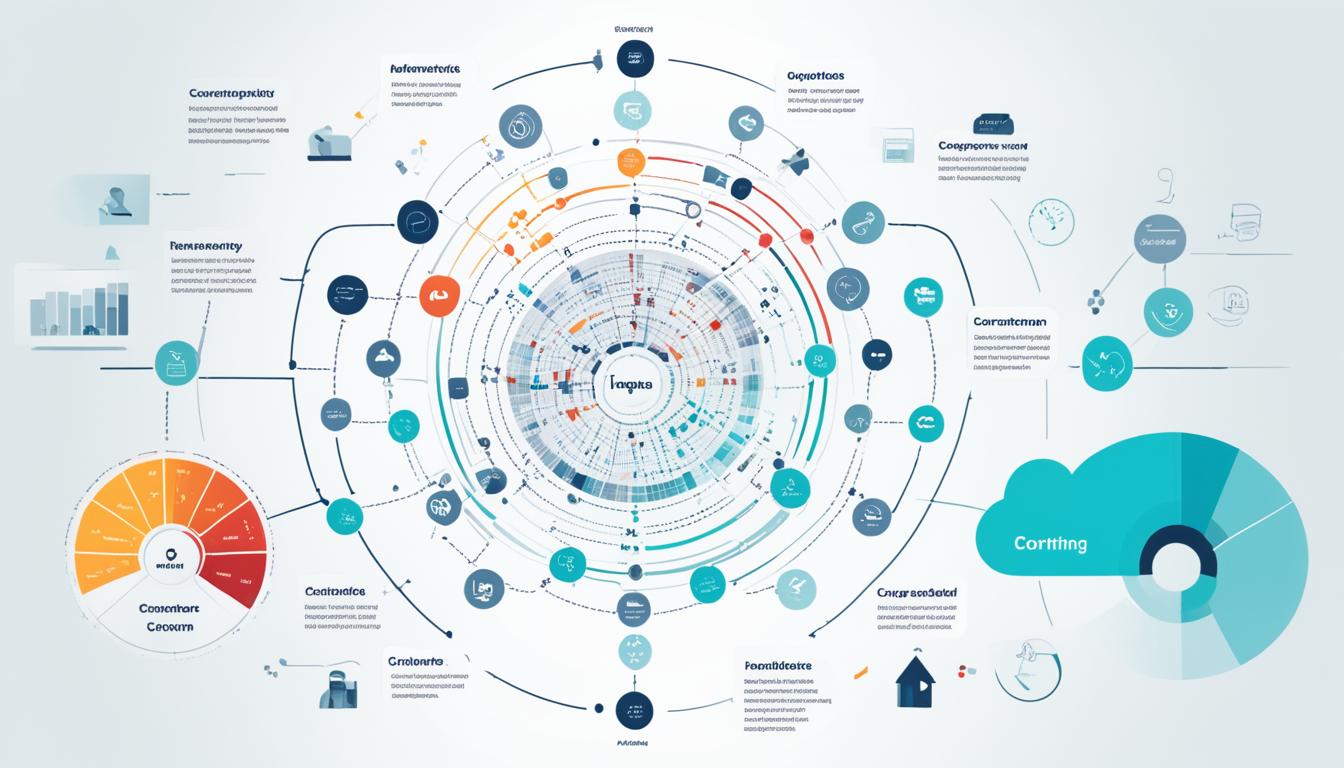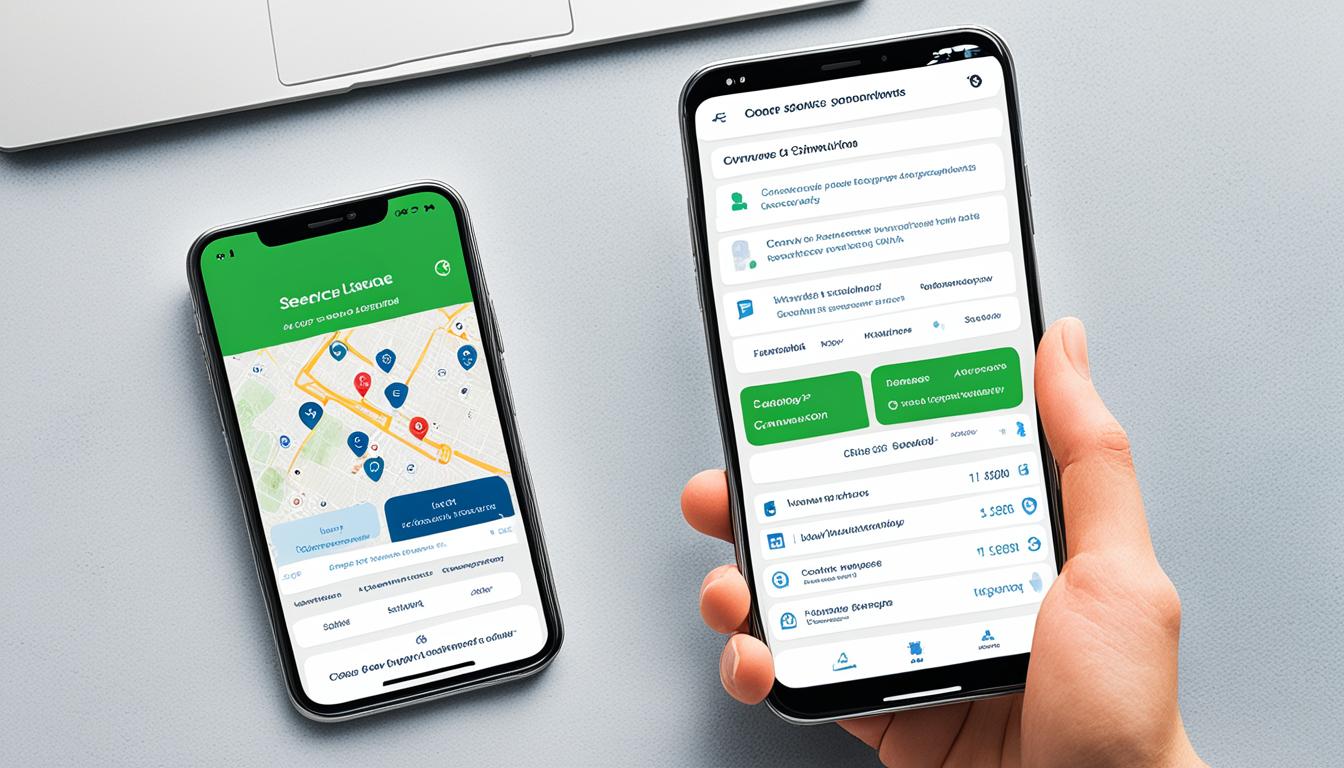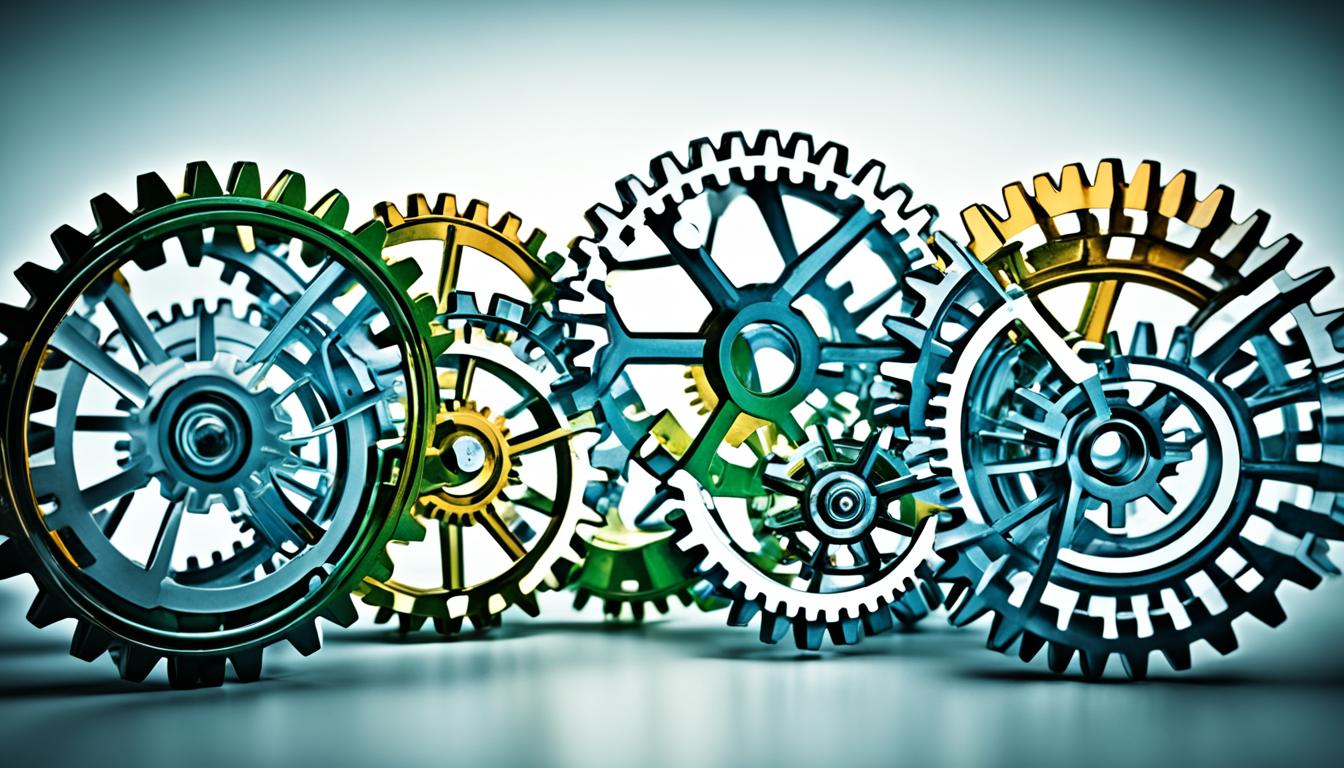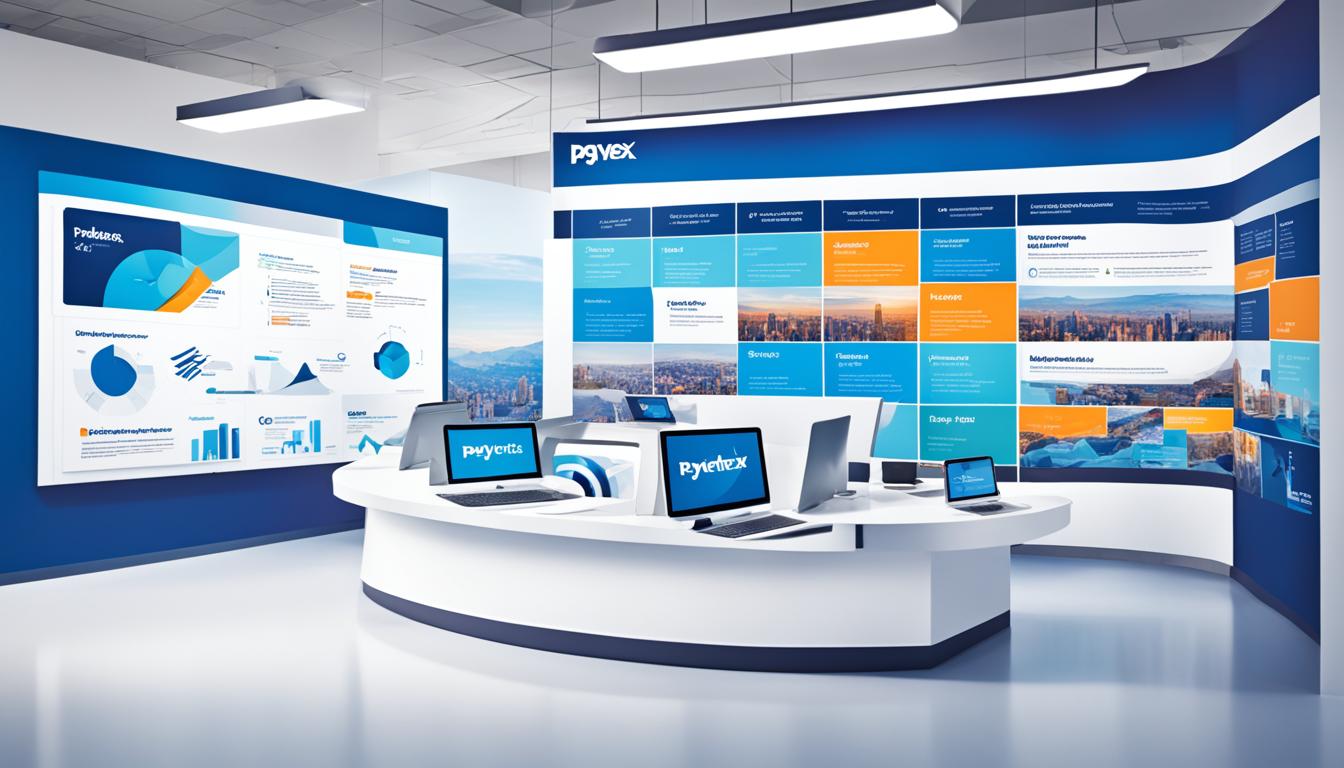A data clean room is a technology service that allows content platforms and advertisers to collaborate while keeping user data private and protected. It is a secure environment where first-party data is aggregated and anonymized, ensuring compliance with privacy regulations such as GDPR and CCPA. Data clean rooms enable data sharing between platforms without exposing personally identifiable information (PII), providing advertisers with non-PII data for targeted advertising and audience measurement. They offer benefits such as regulatory compliance, trend data analysis, user segmentation, data analytics, and enhanced security. However, data clean rooms also face challenges such as data interoperability, data quality assurance, and a lack of standardization. Overall, data clean rooms play a crucial role in enabling privacy-compliant data collaboration in the marketing industry.
Key Takeaways
- A data clean room is a secure environment that allows collaboration between content platforms and advertisers while protecting user data.
- It aggregates and anonymizes first-party data, ensuring compliance with privacy regulations like GDPR and CCPA.
- Data clean rooms enable data sharing without exposing personally identifiable information (PII), providing non-PII data for targeted advertising and audience measurement.
- They offer benefits such as regulatory compliance, trend data analysis, user segmentation, data analytics, and enhanced security.
- Data clean rooms face challenges like data interoperability, data quality assurance, and a lack of standardization.
The Rise of Data Clean Rooms in Marketing
Data clean rooms are revolutionizing the marketing industry as advertisers increasingly recognize the value of collaboration and data insights. These secure environments, also known as data collaboration rooms, provide a solution to break down the barriers imposed by walled gardens, such as Google, Facebook, and Amazon, allowing marketers to leverage data from multiple sources. The rise of data clean rooms can be attributed to several key factors, including the need for privacy-compliant analytics, the demand for accurate measurement and attribution, and the desire for effective marketing strategies.
In the era of data-driven marketing, advertisers understand the importance of utilizing first-party data to personalize their campaigns and reach the right audience. However, accessing valuable data from platforms behind walled gardens has been a challenge. Data clean rooms address this by creating a secure space for advertisers to commingle their first-party data with aggregated data from platforms, enabling comprehensive analysis and insights.
By pouring their first-party data into data clean rooms, marketers can compare it with the aggregated data from platforms within the clean room environment. This comparison helps them understand the effectiveness of their campaigns, identify any discrepancies, and fine-tune their strategies to improve targeting and reach their desired audience. In addition, data clean rooms provide a trustworthy, privacy-compliant framework for measurement and attribution, allowing advertisers to gauge campaign performance accurately.
The rise of data clean rooms can be attributed to the growing emphasis on compliance with data privacy laws, such as GDPR and CCPA. Advertisers are increasingly seeking privacy-friendly solutions that enable effective collaboration while protecting user privacy. Data clean rooms offer a regulated environment for data sharing and analysis, ensuring privacy compliance while providing access to valuable audience insights.
Furthermore, the desire for accurate audience insights and the need for transparency and trust in the advertising ecosystem contribute to the popularity of data clean rooms. Advertisers can leverage data clean rooms to gain deeper insights into audience behavior, preferences, and trends. These insights empower them to make data-driven decisions, refine their targeting strategies, and optimize their campaigns for maximum impact.
To illustrate the rise of data clean rooms, consider the following example:
| Data Clean Rooms | Walled Gardens | First-Party Data | Measurement and Attribution |
|---|---|---|---|
| Secure environments for collaboration | Platforms like Google and Facebook | Marketers’ proprietary data | Accurate campaign analysis |
| Privacy-compliant analytics | Restricted access to data | Insights into user behavior | Understanding campaign performance |
| Commingling of aggregated data | Breaking down data silos | Personalized targeting | Optimizing marketing strategies |
The rise of data clean rooms in marketing signifies a shift towards privacy-compliant, data-driven strategies. As the industry evolves, these secure environments will continue to play a crucial role in enabling effective collaboration, providing accurate measurement and attribution, and driving successful marketing campaigns.
How Data Clean Rooms Work
Data clean rooms are designed to facilitate secure and privacy-compliant data collaboration in the marketing industry. These controlled and secure environments allow content providers and advertisers to analyze aggregated data while protecting user privacy. Understanding how data clean rooms operate is essential to leverage their benefits effectively.
When using a data clean room, content providers upload their first-party data, which consists of user information collected directly from their websites or applications. This data is then matched and aggregated with data from other companies within the clean room, creating a larger dataset for analysis.
To ensure privacy protection, the data in a clean room is anonymized. This means that personally identifiable information (PII) is stripped away, and the data is transformed into a format that cannot be linked to individual users. Techniques such as pseudonymization, which replace direct identifiers with pseudonyms, are used to protect user privacy.
In addition to anonymization, data clean rooms implement various security measures to safeguard the aggregated data. Restricted access is enforced to ensure that only authorized users can access the data within the clean room. Differential privacy techniques are employed to introduce controlled noise into the data, further protecting individual privacy.
Data standardization plays a crucial role in data clean rooms. As first-party data is uploaded and aggregated, it needs to be standardized to ensure compatibility and accurate matching with the aggregated data from various sources. Standardization helps create a seamless integration of data, allowing for meaningful insights and analysis.
Ownership of the data within a clean room is an important aspect. Typically, the content providers retain ownership of their first-party data, and the clean room acts as a secure environment for collaboration. Additionally, involving an independent verification party helps establish trust and credibility in the data, providing an extra layer of assurance.
Data clean rooms enable advertisers and publishers to access aggregated data for targeted advertising, measurement, and audience analysis. By utilizing non-PII data within the clean room, advertisers can better understand their audience, tailor their campaigns, and measure their effectiveness.
Overall, data clean rooms are secure and privacy-focused environments that facilitate data collaboration while protecting user privacy. Through anonymization, security measures, data standardization, and independent verification, data clean rooms offer a reliable solution for privacy-compliant data analysis and collaboration in the marketing industry.
Benefits of Data Clean Rooms in Marketing
Data clean rooms offer several key benefits that have made them increasingly popular in the marketing industry. From privacy compliance to enhanced security, these secure environments provide valuable solutions for advertisers and content platforms.
Privacy Compliance
- Data clean rooms enable advertisers and content platforms to analyze audiences, target ads, and measure campaign performance while maintaining privacy compliance.
- The use of clean rooms ensures that user data remains protected and anonymized, adhering to regulations such as GDPR and CCPA.
Trend Data Analysis
- By utilizing data clean rooms, marketers gain insightful trend data analysis, allowing them to understand user behavior and activity patterns across different groups and demographics.
- Such analysis provides valuable insights into market trends, helping advertisers tailor their strategies and campaigns more effectively.
User Segmentation
- Data clean rooms enhance user segmentation capabilities by providing aggregated data.
- Advertisers can create customized audience groups based on user behavior and preferences, resulting in more targeted and relevant advertising campaigns.
Data Analytics
- Data clean rooms facilitate data analytics, enabling advertisers to leverage insights for improved campaign performance and audience engagement.
- Through advanced analytics, advertisers can gain a deeper understanding of their target audience, optimize targeting strategies, and identify areas for improvement.
Enhanced Security
- Data clean rooms prioritize data security, implementing robust measures to protect sensitive user information.
- These enhanced security protocols significantly reduce the risk of data breaches, ensuring a safe environment for data collaboration and analysis.
| Benefits of Data Clean Rooms | Key Features |
|---|---|
| Privacy Compliance | Ensures adherence to privacy regulations such as GDPR and CCPA |
| Trend Data Analysis | Insights into user behavior and activity patterns |
| User Segmentation | Enables creation of customized audience groups |
| Data Analytics | Improves campaign performance and audience engagement |
| Enhanced Security | Protects sensitive user information and reduces data breach risk |
Challenges of Data Clean Rooms in Marketing
While data clean rooms offer significant advantages, they also come with certain challenges. These challenges can affect the effectiveness and efficiency of data clean rooms, requiring careful consideration and mitigation strategies. The key challenges associated with data clean rooms in marketing include:
Data Interoperability
Data interoperability can be an issue in data clean rooms. Some providers may offer clean rooms limited to their own platforms, making it difficult to combine data from different clean rooms. This lack of interoperability hinders the ability to analyze and derive comprehensive insights from disparate data sources.
Data Quality
Ensuring high data quality is crucial in data clean rooms. Without independent verification, there is a risk of inaccurate or incomplete data, which can impact the reliability of the insights generated. The integrity and accuracy of the data are essential for making informed decisions and implementing effective marketing strategies.
Reluctance to Share Data
Advertisers may be reluctant to share detailed transactional data within data clean rooms due to privacy risks. This reluctance can stem from concerns about data breaches, unauthorized access, or misuse of sensitive information. Such hesitations impact the availability and depth of data, limiting the potential insights that can be derived from data clean rooms.
Lack of Standardization
The lack of standardization poses a challenge in data clean rooms. Different clean room providers may adopt varying data formats and methodologies, making it difficult to merge and analyze data consistently. The absence of standardized practices can limit the comparability and compatibility of data clean room outputs.
Risks of Data Breach
As data clean rooms involve the sharing of valuable first-party data, there is a risk of data breaches. Human errors, technical vulnerabilities, or unauthorized access can lead to the exposure of sensitive user information, compromising privacy and potentially causing reputational damage to both advertisers and data providers.
| Challenges | Implications |
|---|---|
| Data Interoperability | Difficulty in combining data from different clean rooms, limiting comprehensive insights. |
| Data Quality | Risk of inaccurate or incomplete data, impacting reliability of insights. |
| Reluctance to Share Data | Limited availability and depth of data, affecting potential insights. |
| Lack of Standardization | Challenges in merging and analyzing data consistently across different clean room providers. |
| Risks of Data Breach | Potential compromise of sensitive user information, leading to privacy concerns and reputational damage. |
Despite these challenges, data clean rooms remain valuable tools for privacy-compliant data collaboration in the marketing industry. Advertisers and data providers should address these challenges by implementing robust security measures, ensuring data quality assurance, establishing industry-wide standards, and fostering trust among stakeholders. By doing so, the benefits of data clean rooms can outweigh the challenges, enabling effective data-driven marketing strategies.
Alternatives to Data Clean Rooms in Marketing
As the landscape of marketing data privacy evolves and the use of third-party cookies declines, marketers are actively seeking alternatives to data clean rooms. These alternatives provide options for targeted advertising and audience measurement while addressing privacy concerns. Here are some alternatives worth exploring:
1. Universal IDs
Universal IDs offer a substitute for third-party cookies by replacing them with hashed email addresses to create persistent identifiers. This approach allows for the continuation of personalized advertising without compromising user privacy.
2. Privacy Sandbox
Privacy Sandbox, developed by Google, introduces standards that aim to protect user privacy while enabling advertisers and publishers to run programmatic advertising campaigns. This framework ensures privacy-compliant data collaboration within the advertising ecosystem.
3. Contextual Ad Targeting
Contextual ad targeting relies on the context of the webpage or app to deliver relevant ads to users. By analyzing the content and context of a page, advertisers can serve advertisements that align with the user’s interests, without relying on specific user data or third-party cookies.
4. Cryptoidentities
Cryptoidentities are an emerging alternative that leverages avatars or virtual representations of users to deliver personalized experiences without sharing personally identifiable information. This approach strikes a balance between targeting individuals and protecting their privacy.
These alternatives to data clean rooms provide marketers with options to navigate the changing privacy landscape while still delivering effective targeted advertising and audience measurement. By adopting these alternatives, marketers can ensure compliance with privacy regulations and maintain the trust of their audience.
| Alternative | Advantages |
|---|---|
| Universal IDs | – Enables persistent identification without third-party cookies – Maintains personalized advertising – Protects user privacy |
| Privacy Sandbox | – Provides privacy-compliant data collaboration standards – Allows for programmatic advertising campaigns – Protects user privacy while delivering targeted ads |
| Contextual Ad Targeting | – Relies on content and context for ad targeting – Removes reliance on specific user data – Respects user privacy |
| Cryptoidentities | – Uses avatars or virtual representations for personalization – Eliminates the need for personally identifiable information – Preserves user privacy while delivering tailored experiences |
The Different Types of Data Clean Rooms in Marketing
When it comes to data clean rooms in the marketing industry, there are three main types to consider. Each type offers its own advantages and limitations, catering to different needs and objectives. Let’s explore the different types:
1. Walled Gardens
The first type of data clean room is provided by the walled gardens of AdTech platforms such as Google and Facebook. These clean rooms are limited to their respective platforms, offering a controlled environment for data collaboration. Advertisers and content platforms can leverage these clean rooms to access and analyze data specific to the platform, ensuring optimal performance within the walled garden.
2. Independent Providers
The second type of data clean room is provided by independent companies that offer clean room services for data collaboration across multiple platforms. These providers act as intermediaries, allowing advertisers to combine data from various platforms in a privacy-compliant and secure manner. Independent clean rooms offer flexibility by enabling cross-platform data analysis and insights, helping advertisers reach a broader audience and gain a comprehensive view of their campaigns.
3. Large Companies with Data Partnerships
The third type of data clean room is owned by companies with a significant user base and content. These companies have the resources and capabilities to create their own clean rooms for data sharing and analysis. By forming strategic data partnerships with other companies, they can establish a collaborative environment while maintaining control over their data. This type of clean room offers the advantage of leveraging a vast pool of data from multiple sources within a trusted network.
Each type of data clean room has its own considerations. Walled gardens provide platform-specific data, independent providers offer cross-platform collaboration, and large companies with data partnerships have the advantage of a dedicated clean room environment. Consider factors like data interoperability, platform exclusivity, and the nature of data partnerships when choosing the right type of data clean room for your marketing needs.
| Type of Data Clean Room | Advantages | Limitations |
|---|---|---|
| Walled Gardens | Access to platform-specific data | Platform exclusivity |
| Independent Providers | Multiple platform collaboration | Data sharing agreements |
| Large Companies with Data Partnerships | Dedicated clean room environment | Dependency on data partnerships |
Comparing Data Clean Rooms and Custom Data Platforms (CDPs)
Data clean rooms and custom data platforms (CDPs) are two distinct concepts in data management within the marketing industry. While both focus on data collection and analysis, they differ in their approach and purpose.
Data Clean Rooms
Data clean rooms prioritize user privacy and data security. They operate by aggregating and anonymizing data from various sources, ensuring compliance with privacy regulations. The primary goal of data clean rooms is to provide a secure environment for analyzing aggregated data without compromising the privacy of individual users. Data clean rooms enable targeted advertising and audience measurement while protecting sensitive information.
Custom Data Platforms (CDPs)
On the other hand, custom data platforms (CDPs) focus on collecting, sharing, and utilizing first-party data. CDPs often utilize user-level data and IDs to create comprehensive profiles for personalized marketing strategies.
CDPs are valuable for businesses looking to leverage their own data to gain insights into their audience’s behavior and preferences. With user-level data, CDPs provide detailed information on individual customer interactions and create personalized marketing campaigns.
Comparison
While data clean rooms and CDPs are both data management tools, they differ in their approaches and objectives:
| Data Clean Rooms | Custom Data Platforms (CDPs) |
|---|---|
| Focus on aggregated and anonymized data | Focus on individual user-level data |
| Enable targeted advertising and audience measurement | Create personalized marketing campaigns |
| Protect user privacy and data security | Utilize first-party data for insights and personalization |
| Less risk of data leakage | Potential risk of data leakage with user-level data |
In summary, data clean rooms and CDPs provide different solutions for data management in marketing. Data clean rooms prioritize user privacy and data security by analyzing aggregated and anonymized data, while CDPs focus on leveraging individual user-level data for personalized marketing strategies. Businesses must consider their objectives and privacy requirements when choosing between these two approaches.
The Future of Privacy-Compliant Advertising in Marketing
The increasing emphasis on user privacy protection, compliance regulations, and the limitations on third-party cookies are shaping the future of privacy-compliant advertising in marketing. Data clean rooms offer a solution that balances user privacy with the need for targeted advertising and measuring campaign performance. As privacy laws evolve and technologies advance, the marketing industry will continue to explore new approaches to ensure privacy-compliant data collaboration and advertising. The future may bring advancements in data clean room standards, increased data sharing capabilities, and innovative technologies that enable effective audience targeting without compromising user privacy.
Advancements in Data Clean Room Standards
Data clean rooms will witness advancements in standards to enhance their privacy-compliant nature. These standards will focus on data anonymization, pseudonymization, and securing access to the clean room environment. By adhering to these standards, data clean rooms can better protect user privacy while unlocking valuable insights for targeted advertising.
Increased Data Sharing Capabilities
In the future, data clean rooms will enable more seamless and secure data sharing among advertisers, content platforms, and data providers. This means greater collaboration and access to valuable aggregated data, without compromising user privacy. Improved data sharing capabilities will empower marketers to refine their targeting strategies and deliver more personalized and relevant advertisements.
Innovative Technologies for Effective Audience Targeting
Advancements in technology will enable innovative approaches to audience targeting within privacy-compliant advertising. Machine learning algorithms and artificial intelligence will play a significant role in analyzing aggregated data within the clean room environment, allowing advertisers to identify patterns, preferences, and behaviors to deliver more precise and tailored advertising campaigns.
Emphasis on User Privacy Protection and Compliance Regulations
User privacy protection will remain a top priority for marketers as privacy regulations continue to evolve. Adherence to compliance regulations such as GDPR and CCPA will shape the development of privacy-compliant advertising practices. Data clean rooms will need to align with these regulations and implement robust security measures to ensure the utmost protection of user data.
Measuring Campaign Performance in Privacy-Compliant Ways
Measuring campaign performance will become more sophisticated within the realm of privacy-compliant advertising. Data clean rooms will provide advertisers with the tools and insights necessary to evaluate campaign effectiveness without compromising user privacy. This will involve the use of aggregated data, analytics, and measurement techniques that provide valuable metrics while upholding privacy compliance.
The future of privacy-compliant advertising in marketing lies in finding the delicate balance between targeting the right audience and protecting user privacy. Data clean rooms will continue to play a pivotal role in achieving this balance, providing a secure environment for data collaboration and ensuring compliance with privacy regulations. As the industry evolves, marketers will leverage advancements in data clean room standards, increased data sharing capabilities, and innovative technologies to deliver more effective and personalized advertising while maintaining user privacy.
| Benefits | Risks |
|---|---|
| Privacy compliance | Data interoperability |
| Trend data analysis | Data quality |
| User segmentation | Reluctance to share data |
| Data analytics | Lack of standardization |
| Enhanced security | Risks of data breach |
The Benefits and Risks of Data Clean Rooms in Marketing
Data clean rooms in marketing offer numerous benefits that can help advertisers and content platforms optimize their strategies and insights. By leveraging these benefits, they can overcome challenges and unlock the full potential of their data.
Benefits of Data Clean Rooms
Privacy Compliance: Data clean rooms ensure privacy compliance by anonymizing and aggregating data, allowing advertisers to analyze audiences and measure campaign performance in a privacy-friendly manner.
Trend Data Analysis: Clean rooms provide valuable trend data analysis, allowing advertisers to gain insights into user behavior and activity patterns across different groups and demographics.
User Segmentation: With the aggregated data available in clean rooms, advertisers can create more effective user segments, enabling personalized and targeted advertising based on specific audience characteristics.
Data Analytics: Data clean rooms offer robust data analytics capabilities, empowering advertisers to derive actionable insights and improve campaign performance through data-driven decision-making.
Enhanced Security: The implementation of enhanced security measures within data clean rooms ensures the protection of sensitive user information, reducing the risks of data breaches and unauthorized access.
Risks and Challenges of Data Clean Rooms
Data Interoperability: Data interoperability can be a challenge when combining data from different clean rooms, as each provider may have specific formats and methodologies, making it difficult to merge and analyze data seamlessly.
Data Quality: Ensuring high data quality within clean rooms can be challenging without independent verification, which may impact the accuracy and reliability of the insights drawn from the aggregated data.
Reluctance to Share Data: Advertisers may be hesitant to share detailed transactional data due to concerns related to privacy risks. This reluctance might limit the depth and breadth of data available within clean rooms, potentially affecting the effectiveness of targeted advertising and audience analysis.
Lack of Standardization: The lack of standardization in data formats and methodologies across different clean room providers can create complexities when collaborating and analyzing data between platforms. This lack of standardization may hinder seamless data integration.
Risks of Data Breach: As data clean rooms contain valuable first-party data, the risk of a data breach remains a concern. It is essential for advertisers and content platforms to implement robust security measures and protocols to mitigate these risks.
To mitigate these risks and maximize the benefits associated with data clean rooms, advertisers and content platforms must carefully evaluate clean room providers, ensuring robust security measures, data quality processes, and compliance with privacy regulations. By doing so, they can harness the power of data clean rooms, driving targeted advertising, and gaining valuable insights for their marketing campaigns.
Conclusion
In conclusion, data clean rooms are essential for marketing data collaboration, providing a secure environment for sharing and analyzing aggregated data. These privacy-compliant analytics enable targeted advertising, audience segmentation, and campaign measurement, ensuring effective marketing strategies. Despite facing challenges and risks, data clean rooms offer valuable benefits such as privacy compliance, trend data analysis, user segmentation, data analytics, and enhanced security.
Advertisers and content platforms must navigate these challenges and leverage the advantages of data clean rooms to ensure privacy-compliant data collaboration. By prioritizing privacy and implementing robust security measures, they can deliver robust insights for effective marketing strategies. Data clean rooms are shaping the future of privacy-compliant analytics, enabling marketers to adapt to evolving privacy regulations and technology advancements.
With data clean rooms, marketers can confidently collaborate while safeguarding user privacy, harnessing the power of aggregated data to drive successful marketing campaigns. By embracing data clean rooms, advertisers can unlock valuable audience insights, optimize ad targeting, and measure campaign performance, all while respecting privacy regulations and maintaining user trust. Data clean rooms are revolutionizing marketing data collaboration, paving the way for privacy-focused and data-driven marketing practices.
